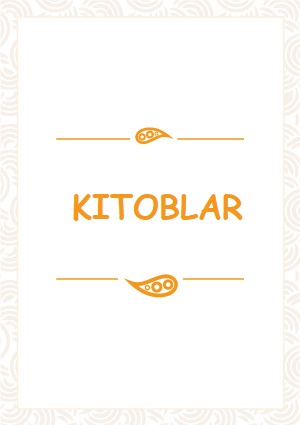stylistic differentiation of the english vocabulary guide to stylistic differentiation of the english vocabulary

- Daraja:
- Oliy ta`lim
- Yo'nalish:
- Ilmiy-ta`limiy
- Turi:
- Ma`ruza matni
- Nashr etilgan yili:
- Til:
- Ingliz tilida
- Yaratilgan vaqti:
- 2021-04-15 02:45:47
Proceeding from the heterogeneity of the vocabulary it is divided in the present manual into neutral — the bul¬kiest—literary and colloquial strata. *
I. LITERARY STRATUM OF WORDS
I. The first subdivision of literary words to come under discussion are archaisms. Their main types illustrated by the given examples are: archaisms proper, i. e., antiquated or obsolete wrords replaced by new ones (e. g., anon—at once; haply—perhaps; befall—happen, etc.); historical words, i. e., words denoting such concepts and phenomena that have gone out of use in modern times (i. e., knight, spear, lance, etc.); poetic words, i. e., archaic words with the fixed sphere of usage in poetry and elevated prose and with the function of imbuing the work of art with^a lofty poetic colouring (e. g., woe—sorrow; hapless—unlucky; staunch—firm, harken—hear, etc.); morphological (or par¬tial) archaisms, i. e., archaic forms of otherwise non-archaic words (e. g., speaketh, cometh, wrougth, brethren, etc.).
Дабавлено : 2021-04-15 02:45:47
Этот категорий
Pythonda matematik hisoblashlarni dasturlash

- Daraja:
- Oliy ta`lim
- Turi:
- Uslubiy qoʻllanma
- Til:
- O`zbek tilida (lot.)
- Yaratilgan vaqti:
- 2022-11-14 07:47:03
Ushbu uslubiy qo`llanma Python dasturlash tilida matematik hisoblash ishlarini dasturlashga bag`ishlangan. Bunda asosiy e’tibor massiv va matritsalar bilan ishlash, ular ustida bajariladigan amallar va funksiyalarni qo`llash, ilmiy grafiklarni yaratish funksiyalari imkoniyatlari bilan tanishish, SciPy paketi funksiyalari imkoniyatlarini o`rganish qaratilgan.
Nazariy mexanika

- Daraja:
- Oliy ta`lim
- Turi:
- Uslubiy qoʻllanma
- Til:
- O`zbek tilida (lot.)
- Yaratilgan vaqti:
- 2022-11-14 07:46:55
Mazkur uslubiy ko`rsatma muhandislik yo`nalishlarning sirtqi bo`limida ta’lim olayotgan barcha talabalar uchun mo`ljallangan. Mualliflar sirtqi ta’limda tahsil olayotgan talabalarga nazariy mexanika fanidan topshirishi kerak bo`lgan nazorat ishlarini qanday bajarish kerakligini o`rgatshini maqsad qilib ish yuritilgan.
Nazariy mexanika

- Daraja:
- Oliy ta`lim
- Turi:
- Uslubiy qoʻllanma
- Til:
- O`zbek tilida (lot.)
- Yaratilgan vaqti:
- 2022-11-14 07:46:46
Mazkur uslubiy ko`rsatma muhandislik yo`nalishlarning 60730300-Qurilish (bino va inshootlarni loyihalash, qurilish) yo`nalishi talabalari bo`limida ta’lim olayotgan barcha talabalar uchun mo`ljallangan.
Fundamentals of scientific research and innovation

- Daraja:
- Oliy ta`lim
- Turi:
- Oʻquv-uslubiy majmua
- Til:
- Ingliz tilida
- Yaratilgan vaqti:
- 2022-11-14 07:45:59
In a market economy, there is a radical restructuring of science associated with the creation of competitive products, the transformation of science into the leading force of material production. The need for a scientific approach in the production of goods, economics and politics, the management environment and the education system forces science to develop at a faster pace than any other field of activity.
Oila tibbiyoti

- Daraja:
- Oliy ta`lim
- Turi:
- Oʻquv-uslubiy majmua
- Til:
- O`zbek tilida (lot.)
- Yaratilgan vaqti:
- 2022-11-14 07:42:58
Ushbu fan respublikadagi sog`liqni saqlash tizimida o`tkazilayotgan islohotlar kesimida muhim ahamiyatiga ega. Sog`liqni saqlash birlamchi bo`g`iniga alohida e’tibor berilishi va umumiy amaliyot shifokori (pediatr) tizimini rivojlantirish nuqtai nazaridan bu fanning ahamiyati oshib bormoqda. SHu munosabat bilan ushbu dastur birlamchi bo`g`inda keng tarqalgakasalliklarni oldini olish, kechishi, davolashi va reabilitatsiya o`tkazishni qamrab oladi.
Новый
Жиззах вилоятида туристик дестинацияларни ташкил этишнинг ҳудудий жиҳатлари

- Daraja:
- Oliy o`quv yurtidan keyingi ta`lim
- Turi:
- Avtoreferat
- Nashr etilgan yili:
- 2022
- Til:
- Rus tilida,O`zbek tilida (kir.),Ingliz tilida
- Yaratilgan vaqti:
- 2022-11-14 07:58:58
Тадқиқотнинг мақсади Жиззах вилоятида туризм дестинацияларини ҳудудий ташкил этиш имкониятлари ва салоҳиятини аниқлаш, улардан самарали фойдаланиш бўйича таклиф-тавсиялар ҳамда ривожлантиришнинг ҳудудий жиҳатларини ишлаб чиқишдан иборат.
Таълим муассасаси раҳбарининг бошқарув фаолиятида соғлом ва ижодий муҳитни яратиш механизмларини такомиллаштириш

- Daraja:
- Oliy o`quv yurtidan keyingi ta`lim
- Turi:
- Avtoreferat
- Nashr etilgan yili:
- 2022
- Til:
- Rus tilida,O`zbek tilida (kir.),Ingliz tilida
- Yaratilgan vaqti:
- 2022-11-14 07:58:49
Тадқиқотнинг мақсади таълим муассасаси раҳбарининг бошқарув фаолиятида соғлом ва ижодий муҳитни яратиш механизмларини такомиллаштиришга доир таклиф ва тавсиялар ишлаб чиқишдан иборат.
Ишлаб чиқариш таълими усталарининг касбий компетентлигини ривожлантириш

- Daraja:
- Oliy o`quv yurtidan keyingi ta`lim
- Turi:
- Avtoreferat
- Nashr etilgan yili:
- 2022
- Til:
- Rus tilida,O`zbek tilida (kir.),Ingliz tilida
- Yaratilgan vaqti:
- 2022-11-14 07:58:42
Тадқиқотнинг мақсади профессионал таълим муассасалари ишлаб чиқариш таълими усталарини тайёрлаш ва малакасини ошириш жараёнида уларнинг касбий компетентлигини ривожлантириш методикасини такомиллаштиришдан иборат.
Eliptik qismi yuqori tartibli bo`lgan kasr tartibli xususiy hosilali differensial tenglamalar uchun to`g`ri va teskari masalalar

- Daraja:
- Oliy o`quv yurtidan keyingi ta`lim
- Turi:
- Avtoreferat
- Nashr etilgan yili:
- 2022
- Til:
- Rus tilida,Ingliz tilida,O`zbek tilida (lot.)
- Yaratilgan vaqti:
- 2022-11-14 07:58:34
Tadqiqot maqsadi ixtiyoriy elliptik operatorli xususiy hosilali va kasr tartibli xususiy hosilali tenglamalar uchun to`g`ri va teskari masalalarning yechimi mavjud va yagonaligini ko`rsatishdan iborat.
Саноат корхоналари ривожланишининг инновацион стратегияларини такомиллаштириш

- Daraja:
- Oliy o`quv yurtidan keyingi ta`lim
- Turi:
- Avtoreferat
- Nashr etilgan yili:
- 2022
- Til:
- Rus tilida,O`zbek tilida (kir.),Ingliz tilida
- Yaratilgan vaqti:
- 2022-11-14 07:49:28
Тадқиқoтнинг мақсади саноат корхоналари, хусусан фармацевтика саноати ривожланишининг инновацион стратегияларини такомиллаштириш бўйича илмий таклиф ва амалий тавсиялар ишлаб чиқишдан иборат.

